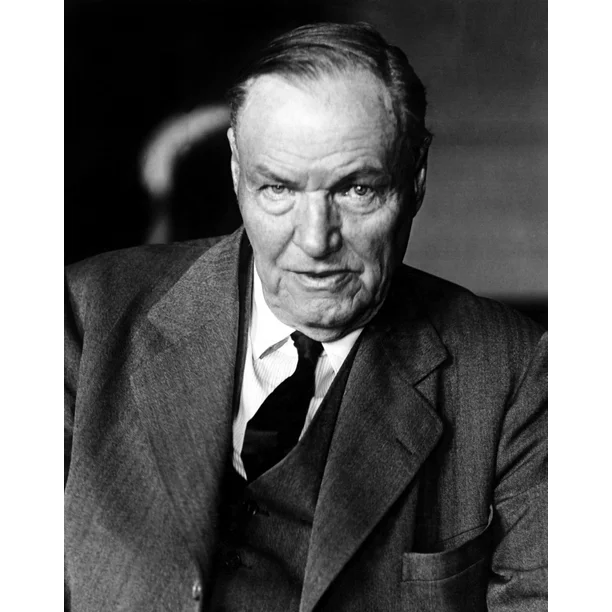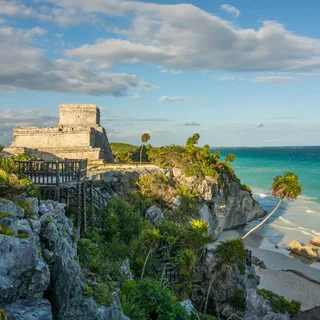Clarence Darrow, a giant of the American law, dominates both the legal system and the spaces of Chicago and its culture. Along with the focus on rhetorical speeches and civil liberties, Darrow’s last wishes and their fulfillment added an extra layer to the story. Such as his ashes were spread in Chicago’s Columbia Basin behind the Museum of Science and Industry. Still, its symbolic evidence and message regards the subject are rooted in values and connections to the city.
This essay considers the Columbia Basin and its representation in the interplay of symbols and history and the story of Clarence Darrow and his ashes.
Clarence Darrow: Who Was He?
Recognized as the “Attorney for the Damned” Clarence Darrow was one of the most popular representatives of the legal business of the early twentieth century. He was born in 187 and became famous for defending such unpopular persons as reactionaries, social activists, and workers. His most famous trials involved the successful defense of two wealthy, young men, Leopold and Loeb, for a horrifying murder case and the Scopes “Monkey” trial which was the controversy over the teaching of evolution in schools and for which he defended John Scopes.
Besides, Darrow was an agnostic, philosopher, lawyer, and social justice activist for the disadvantaged in society. His best-known works contributed to altering American law in the long run by providing criticism of the legal and moral norms.
The Columbus’ Basin Importance
The Columbia Basin is an artificial lake located along the Museum of Science and Industry in Jackson Park in Chicago. For Darrow, this place was of significant importance because the gave it natural and historical advantages. He said that he has relations with it and went for a walk in and around the estate quite often. Other than a representation of contemplation, the basin also had elements of Chicago, the place that was vital for many of his professional activities.
Hence, apart from the natural beauty of the Columbia Basin, it forms part of the resource on which Darrow now draws.
Darrow’s Last Insights
In his letter written before his death on March 13, 1938, Clarence Darrow outlined what he wanted to be done at his burial. He despised most of the typical religious ceremonies and even funeral rites because he was an atheist. Instead, he requested a ceremony where his ashes should be spread at the waters of the Jackson Park Lagoon, specifically from the Clarence Darrow Memorial Bridge.
This act had more to do with his strategic and existential views of life and death, and not just the burial grounds. Burial means dispersing ashes signifying the return to nature that according to Darrow is part of the universe and nature.
The Dispersal of Ashes
Like Darrow wanted, his ashes were scattered after his death. The ceremony was very simple, yet touching and that was the life of the man who has devoted his entire life to fighting for the vulnerable and fighting social injustice. In his honor, relatives and acquaintances, as well as fans, came to the pedestrian and scattered his ashes to the winds in the Columbia Basin.
For people who appreciated and valued Darrow and his societal accomplishments restoring and enhancing the lagoon made it a site of reflections and memoriam.
That is why it is worth mentioning the Memorial Bridge for Clarence Darrow.
In the story of Clarence Darrow’s ashes, a certain place is attributed to the bridge that spans the Columbia Basin. This brought into being the Clarence Darrow and it is famously referred to as the Clarence Darrow Memorial Bridge. Today, people come to the bridge to pay tribute to Darrow and their anniversary is March 13 of this year, he died.
Since such ceremonies are given in honor of him, speeches, analyses of his work, and conversations with regard to the relevance of the ideas are often incorporated into the ceremonies. Because of the scenery of the calm waters of Columbia Basin, this bridge creates a proper environment for such memories.
Every Year’s Remembrance
Proof of his influence is the annual functions that take place now at the Clarence Darrow Bridge. In order to celebrate the life of Darrow and the work that he did these meetings are open to all from activists to historians, lawyers,s and more. The official part of any event is traditionally held on the bridge – a message followed by a strike on the bell; a meeting on the bridge is followed by lectures and presentations in the New Columbia Room of the adjacent Museum of Science and Industry.
These memorial traditions recall the efforts made by Darrow in social justice and civil rights as well as the domain of law.
Chicago and Columbia Basin: A Cultural Overview
ColumbiBasinin is not only a beautiful lagoon but also an important historic site and an archaeological asset as well. In its phase as the last resting place of Clarence Darrow’s ashes, it became a symbol of his connection with Chicago and his social and legal accomplishments.
The history of the city has been preserved not only in the basin but also in the parklands that surround the whole area. Jackson Park with the marvelous work done by Frederick Law Olmsted designed the place where the 1893 World’s Columbian Exposition was to be held. People still come for recreation and self-Obrázky reflection in the park area and the attract the like Columbia Basin.
The Legacy of Clarence Darrow
Clarence Darrow can be discussed from several perspectives. As a solicitor, he fought individuals against oppression structures. As a thinker, he did not spare religious dogma and societal norms and mores. The Columbia Basin was where he wanted to be and his last wishes were incongruent with his ideologies and beliefs.
Jackson Park Lagoon’s yearly ceremonies are proof of his continued legacy. On this, they show how timely his thoughts are in the contemporary discourses on justice and civil liberties, reform,m and the role of law in everyday life.
Conclusion: Honoring Clarence Darrow’s Memory
This is the story of Clarence Darrow’s ashes and the Columbia Basin, a surely compelling episode in the life of one of America’s most important characters. It proves his loyalty to the city; his principles; and his fight for civil liberties and justice, both of which were left by him after his passing.
The Columbia Basin can be said to be a muse as well as a platform that brings together people laying down their thoughts at the Clarence Darrow Memorial Bridge.
As we honor Clarence Darrow, let’s also honor the principles he upheld: essay justice compassion, and the balls to enact change.
To read more interesting articles, please, visit Abdull Hou Hadi.
FAQs About Clarence Darrow
- Why is Clarence Darrow called the “Attorney for the Damned”?
Clarence Darrow earned this title due to his defense of unpopular clients, including social activists, workers, and individuals involved in highly controversial cases like the Leopold and Loeb trial and the Scopes “Monkey” Trial. - What were Clarence Darrow’s last wishes regarding his burial?
Clarence Darrow requested that his ashes be scattered in the Jackson Park Lagoon near the Columbia Basin, reflecting his philosophical beliefs and connection to Chicago. - What is the significance of the Columbia Basin in Clarence Darrow’s life?
The Columbia Basin held personal and symbolic importance for Darrow, as it represented his connection to nature, Chicago, and his philosophical outlook on life and death. - What happens at the annual Clarence Darrow Memorial ceremonies?
The annual ceremonies at the Clarence Darrow Memorial Bridge include speeches, reflections, and tributes to Darrow’s work, followed by presentations at the nearby Museum of Science and Industry. - How does the Clarence Darrow Memorial Bridge honor his legacy?
The Clarence Darrow Memorial Bridge serves as a site for remembrance and reflection, symbolizing his lifelong fight for social justice, civil liberties, and legal reforms.






One thought on “Clarence Darrow: Legacy & Columbia Basin Tribute”